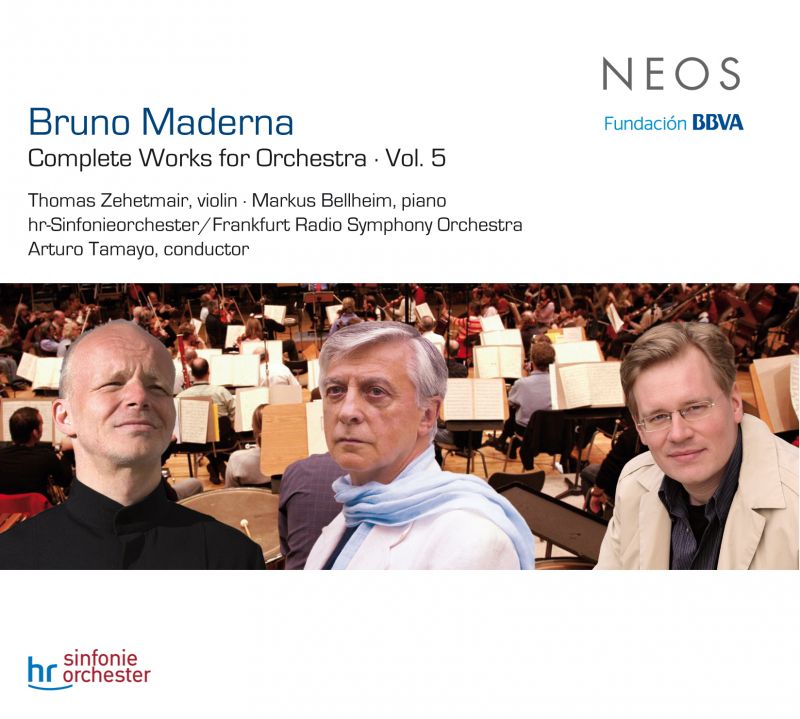MADERNA Violin Concerto. Piano Concerto
Zehetmair and Bellheim play key Maderna concertos
View record and artist detailsRecord and Artist Details
Composer or Director: Bruno Maderna
Genre:
Orchestral
Label: Neos
Magazine Review Date: 11
Media Format: CD or Download
Media Runtime: 46
Mastering:
DDD
Catalogue Number: NEOS10937

Tracks:
| Composition | Artist Credit |
|---|---|
| Concerto for Violin and Orchestra |
Bruno Maderna, Composer
Arturo Tamayo, Conductor Bruno Maderna, Composer Frankfurt Radio Symphony Orchestra Thomas Zehetmair, Violin |
| Concerto for Piano and Orchestra |
Bruno Maderna, Composer
Arturo Tamayo, Conductor Bruno Maderna, Composer Frankfurt Radio Symphony Orchestra Markus Bellheim, Piano |
Author: Philip Clark
The work has already been well documented on record. In 2010 Neos released an archival recording of the premiere conducted by Maderna with David Tudor on piano (7/11), and I’ve long admired Emanuele Arciuli and Sandro Gorli’s 1998 performance on Stradivarius. But this new version – Markus Bellheim and the Frankfurt Radio Symphony Orchestra under Arturo Tamayo – elevates the piece to a new plain, playing out its contradictions as eloquent sonic theatre.
Long passages for orchestra alone are cracked into by hefty piano cadenzas and only gradually out of this collision of materials does a recognisable concerto form piece itself together. But Bellheim stresses an even giddier ambiguity – the ‘music’ of the piano tested against the ‘sound’ of the piano, as tautly organised counterpoint is obliged to inhabit the same space as inside-of-the-instrument rumblings and, at one climactic peak, the lid of the piano being slammed.
In Maderna’s Violin Concerto, written a decade later, the violinist appears only after an extended sequence of spaghetti-junction brass fanfares disappear inside hectic string-writing, which itself is overlaid with melismatic, galloping tuned percussion – itself stopped by a sudden pure-toned woodwind chorale – each stratum rotating within its own time frame. When the violin eventually enters with dislocating melodic lines, a similar process begins, familiar from the Piano Concerto, of the material needing to learn how to assemble itself as a concerto. Mission accomplished, the piece simply stops. But Zehetmair and Tamayo keep the journey alive and urgent.
Discover the world's largest classical music catalogue with Presto Music.

Gramophone Digital Club
- Digital Edition
- Digital Archive
- Reviews Database
- Full website access
From £8.75 / month
Subscribe
Gramophone Full Club
- Print Edition
- Digital Edition
- Digital Archive
- Reviews Database
- Full website access
From £11.00 / month
Subscribe
If you are a library, university or other organisation that would be interested in an institutional subscription to Gramophone please click here for further information.




